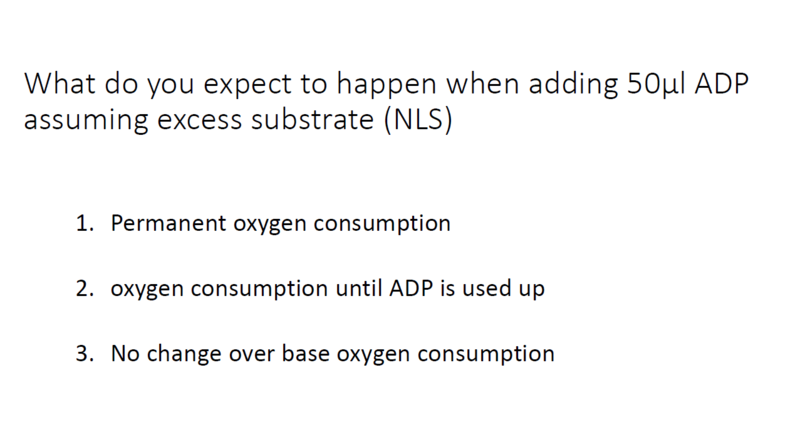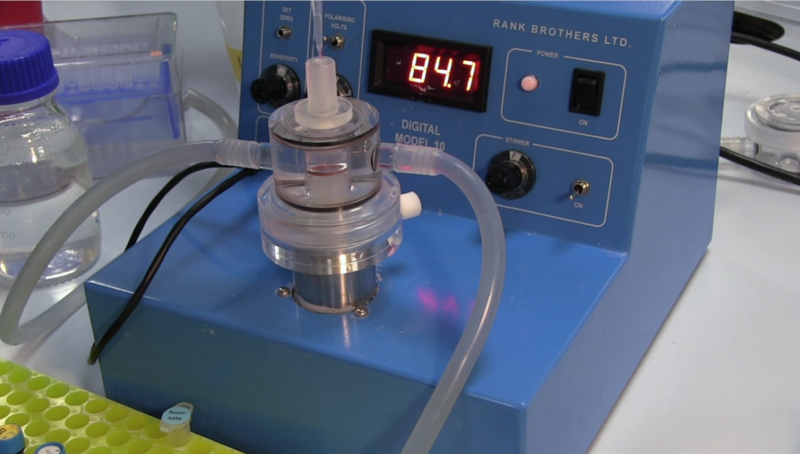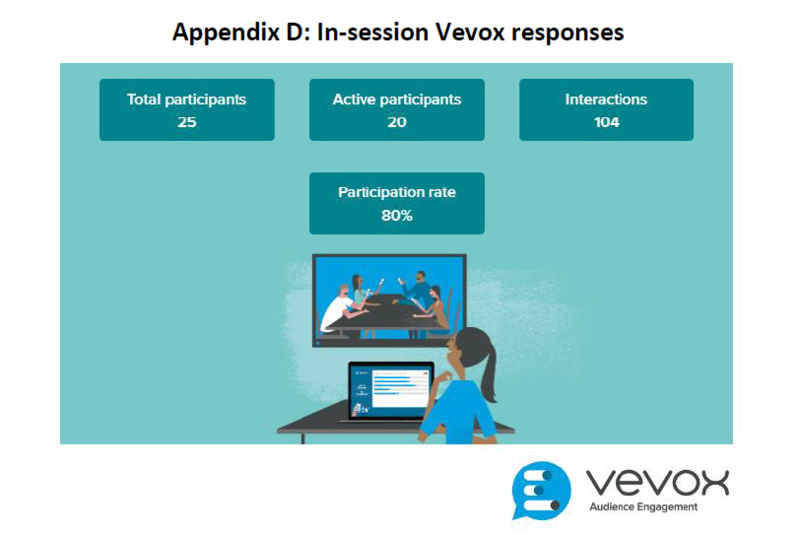- Group size: Large
- Teaching level: Undergraduate
- Division: Medical Sciences
- Subject: Biochemistry
- Tools: Vevox, Canvas
Delivery
Student engagement in predicting the results of an experiment in real time was achieved via the digital tool Vevox. This polling resource was very useful when integrated in a virtual practical activity that used pre-recorded clips of the experiment exploring respiration in mitochondria. This experiment illustrates the concept of electron transport chain and oxidative phosphorylation that students had previously studied.
This same approach was used during a live experimental demonstration for Opportunity Oxford. An introductory short video explained the premise of the experiment and how the equipment set up would provide us with an output that we could use to deduce how the 'cogs' of the ATP producing mechanism work together. Successive experimental steps were played in video or done live after students answered via a poll what they thought would happen next or what compound should be used to achieve a stated outcome.
Strengths
Vevox input ensured that most students participated rather than being passive spectators. Six poll questions were used, normally to start a new experimental section that would last five minutes. The poll results were visible to all students. Some answers showed a clear consensus, whereas for others there was some fluctuation that could be seen live as more students answered. I asked for volunteers to explain their choice of answer. A summary relating to the diagram of the respiratory chain wrapped up each segment.
Summary
This interactive format allowed for immediate feedback on students’ input and reinforced key concepts. The assessment consisted of students answering some questions via a quiz on Canvas with a mix of multiple choice and text answers. Feedback from colleagues was very positive in this approach both as a replacement for a practical session in the lab and as a demonstration.

Figure 1. Example of a question in Vevox

Figure 2. This is one of the images used in the polling activity about the respiration in mitochondria experiment

Figure 3. This image shows the students’ summarised responses on Vevox
Contributed by: Juan Escobar, Biochemistry Teaching Laboratory, Department of Biochemistry